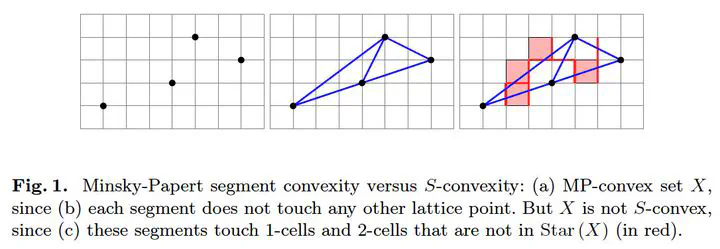New characterizations of full convexity

Abstract
Full convexity has been recently proposed as an alternative definition of digital convexity. In contrast to classical definitions, fully convex sets are always connected and even simply connected whatever the dimension, while remaining digitally convex in the usual sense. Several characterizations were proposed in former works, either based on lattice intersection enumeration with several convex hulls, or using the idempotence of an envelope operator. We continue these efforts by studying simple properties of real convex sets whose digital counterparts remain largely misunderstood. First we study if we can define full convexity through variants of the usual continuous convexity via segments inclusion, i.e. ``for all pair of points of X, the straight segment joining them must lie within the set X’. We show an equivalence of full convexity with this segment convexity in dimension 2, and counterexamples starting from dimension 3. If we consider now d-simplices instead of a segment (2-simplex), we achieve an equivalence in arbitrary dimension d. Secondly, we exhibit another characterization of full convexity, which is recursive with respect to the dimension and uses simple axis projections. This latter characterization leads to two immediate applications: a proof that digital balls are indeed fully convex, and a natural progressive measure of full convexity for arbitrary digital sets.
Type
Publication
In: Brunetti, S., Frosini, A., Rinaldi, S. (eds) Discrete Geometry and Mathematical Morphology. DGMM 2024, volume 14605 of Lecture Notes in Computer Science, pp 41-53, 2024. Springer, Cham